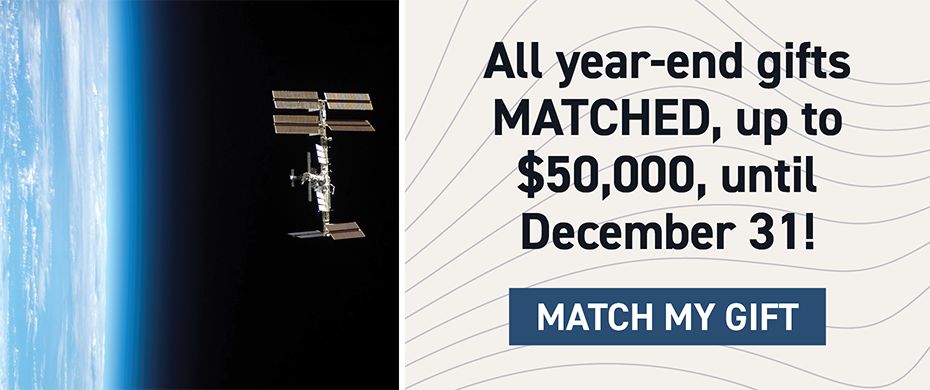All Stories
Showing 1421 - 1430 of 1717
What’s missing when you sit in front of a computer all day? Adventure! Luckily, three Time and Navigation photography missions took me across the country last year, giving me the chance to escape the office.
When Secretary of the Navy William J. Middendorf II commissioned the USS Smithsonian, CVM-76, on June 28, 1976, he announced in authentic navy parlance that “the floors are now decks, walls are bulkheads and stairs are ladders. "Welcome Aboard!” Visitors to the gallery may not realize that exhibits artisans built the gallery using the decks, bulkheads, ladders and other parts removed from five famous American aircraft carriers.
How do you bring together two orbiting astronauts and more than 12,000 students scattered around the U.S. and Canada? It’s not rocket science, but it's close. First you have to find some very dedicated partners with a common purpose, like the Smithsonian National Air and Space Museum, the National Aeronautics and Space Administration, the U.S. Department of Education, and the National Center for Earth and Space Science Education. Second you have to ensure an audience; which isn’t very difficult because who wouldn’t jump at the chance to talk to astronauts while in space? Third, and most challenging, you have to put together the technology capable of linking 24 sites scattered around North America and Hawaii with something moving at 28,163 kph (17,500 mph) 354 km (220 miles) above the Earth’s surface.
My first word was JET, since we lived near an Air Force base and experienced sonic booms on a regular basis. My fascination with the heavens took off from there. Growing up, my family went camping and backpacking a lot, and one of my clearest memories of that time is looking up at a dark, dark sky and pointing out satellites to each other, those little moving points of light that are sometimes so faint I could only see them in my peripheral vision.
Gustave Whitehead (1874-1927), a native of Leutershausen, Bavaria, who immigrated to the United States, probably in 1894, claimed to have made a sustained powered flight in a heavier-than-air machine on August 14, 1901, two years before the Wright brothers.
In early 2010, I received an e-mail out of the blue from Julie Decker, the chief curator of the Anchorage Museum, asking if I would be interested in co-curating an exhibition on flight and Alaska.
An April Fools blog by the Smithsonian's National Air and Space Museum
Check out this fun Peeps diorama depicting the celebration of Space Shuttle Discovery's arrival at our Udvar-Hazy Center on April 19, 2012.
On April 1, the 2013 Major League Baseball season begins. The National Air and Space Museum’s hometown Washington Nationals begin their season at home. My beloved Baltimore Orioles, however, begin their season on the road against the Tampa Bay Rays in Florida. Like most teams, they will take a chartered airplane to their destination.
Visitors to the National Air and Space Museum don’t often get to see the work that goes on behind the scenes. This is especially true in terms of the labor that goes into collecting and caring for our artifacts. Many may wonder where all the air and space stuff (we call them artifacts) comes from. The answer is from a variety of places, including the United States Air Force, NASA, and the general public. These artifacts vary; some are large (aircraft and spacecraft) but many are relatively small (aircraft equipment or military or commercial airline uniforms and insignia, for example, or items of popular culture—air and space toys and games).
